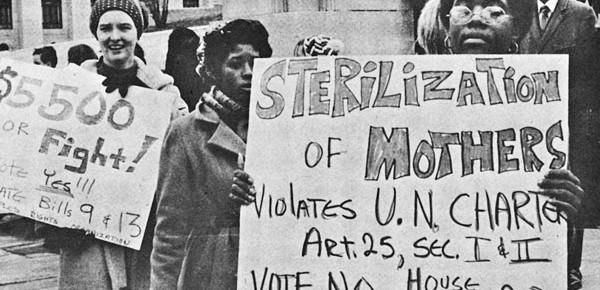
North Carolina announced a sum of $10m to compensate victims of forced sterilization. The award is a reminder of the legacy of eugenics. Eugenicists argued that the state should prevent the reproduction of the “feebleminded,” in North America and around the world. In recent incarnation it extends to the one child family policy in China (where 222 million sterilizations have occurred since 1971).
North Carolina, which set up its Eugenics Board in 1937 and ended the policy in 1973, declined to make a compensatory allocation last year. Like other states, notably Oregon, the compensation of victims from as recently as the 1970s and the expression of public remorse toward these victims has been far slower coming than it ought to have been and the fiscal compensation modest.
Many assume that eugenics ended decades ago. Eugenicists’ association with Nazism seemed permanently to taint the doctrine. In fact involuntary sterilization continued and even increased in several American states such as California, Oregon, and North Carolina, and Canada’s Alberta for several decades after 1945. During this period, coerced sterilization often has post-eugenic justifications: African Americans were sterilized in the South with the aim of cutting welfare costs, and hundreds of thousands of citizens in India were coercively sterilized in the name of poverty reduction.
State boards of eugenic experts, such as that in North Carolina, received recommendations for sterilization from superintendents and routinely approved them. Of 4,785 recommendations sent to Alberta’s Board of Eugenics, the Board accepted the recommendation for 99 percent of the cases and deferred a decision in the remaining one percent. Oregon’s Board of Social Protection (its Eugenics Board) recommended coerced sterilization of the state’s institutionalized patients into the 1970s. In most if not all cases, the line between voluntary and forced was blurred.
State homes for the so-called “mentally ill” had become used to sterilizing its inmates. But more subtle factors were also at play. Many of those advocating eugenics in the 1920s and 1930s reinvented themselves as population experts in the 1950s and 1960s, giving a new boost to the same policies. Often these enthusiasts extended their program well beyond North America into the concerns of growing populations in third world countries.
Eugenic sterilization was linked to President Lyndon Johnson’s Great Society. Designed to move millions of Americans out of impoverishment, the War on Poverty unwittingly embraced the virtues of eugenic sterilization – that is, preventing excessive fertility among those judged inferior.
Critics of welfare dependency in such states as North Carolina seamlessly shared the values and (mostly well-intentioned) aims of eugenic advocates from the 1940s. Over the next two decades close to 6,000 North Carolinian women were duly sterilized. Elaine Riddick, who has helped the campaign for compensation, was one of these victims. The program received federal funds for birth control in the 1964 Economic Opportunity Act, enacted after lobbying by population control think tanks.
The recent history of the United States, Canada, India, Peru, Mexico, and China highlight the great human misery caused by social engineering through fertility and population control. The way in which state legislators and governors now discuss the long overlooked policy of involuntary sterilization and offer compensation to its victims should alert other countries and regimes to the long term consequences of programs designed to shape a nation’s demographic trajectory. It is extremely dangerous for policymakers to assume that scientific doctrine permits mass demographic manipulation.
About the Authors:
Randall Hansen is a Professor of Political Science at the University of Toronto. Desmond King is a Straus Fellow at NYU Law School in 2013-14. They are the authors of Sterilized by the State: Eugenics, Race and the Population Scare in Twentieth-Century North America.
Latest Comments
Have your say!